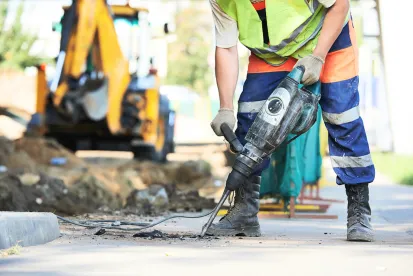We have repeatedly predicted that the EPA would seek to have at least two types of PFAS (PFOA and PFOS) designated as “hazardous substances” under the Comprehensive Environmental Response, Compensation & Liability Act (CERCLA, also known as the Superfund law). With the release of the EPA’s PFAS Roadmap in October 2021 and last week’s announcement that the EPA had notified the White House of its intent to designate PFOA and PFOS as “hazardous substances”, these predictions have proven to be accurate. One of the industry types that will be most at risk from such designations under CERCLA is the construction industry, yet many construction companies see such risks as too far-removed from day-to-day operations to plan for. Yet, PFAS risks and construction industry planning is a must given that the failure to plan now may end up costing certain companies in the industry a significant amount of money that will lead to business interruption.
PFAS Under Superfund Law
Once a chemical is listed as a “hazardous substance” under CERCLA, the EPA has the authority to order responsible parties to cleanup sites contaminated with the designated chemicals, with the cost being born entirely by the responsible parties. Alternatively, the EPA can clean up the site on its own and then seek payment of the costs from responsible parties. Either way, the cleanup of so-called Superfund sites can be costly – anywhere from a few hundred thousand dollars for a small parcel of land to hundreds of millions of dollars. The designation also triggers considerable reporting requirements for companies. Currently, those reporting requirements with respect to PFAS do not exist, but they would apply to industries well beyond just PFAS manufacturers.
PFAS Risks and Construction Industry
PFAS have been found in construction and building materials of many kinds, including to name a few:
-
Paints and coatings;
-
Solvents;
-
Wood finishes;
-
Flame retardant materials;
-
Window surface treatments;
-
Sealants;
-
Adhesives;
-
Lubricants;
-
Roofing membranes;
-
Cement (as an additive);
-
Cable and wire;
-
Gaskets; and
-
Flooring products.
The downstream effects of a PFOA and PFOS designation would be massive, including to the construction industry. Waste management companies will be targeted given the large swaths of land that are utilized for landfills and the likely PFAS pollution that can be found in most landfills due to the chemicals’ prevalence in construction materials and consumer goods. These site owners will be the first targeted when the PFOA/PFOS designation is made, which will lead to lawsuits filed against any company that sent waste to the landfills for contribution to the cost of cleanup that the waste management company or its insured will bear. This will certainly include numerous construction companies that likely used many of the same landfills for years in the regions in which they were awarded contracts.
Also of concern to companies are the re-opener possibilities that a CERCLA designation would result in. Sites that are or were previously designated as Superfund sites will be subject to additional review for PFOA/PFOS concerns. Sites found to have PFOA/PFOS pollution can be re-opened by the EPA for investigation and remediation cost attribution to parties that the EPA finds to be responsible parties for the pollution.
Whether through direct enforcement action, re-opener remediation actions, or lawsuits for contribution, the costs for site cleanup could amount to tens of millions of dollars, of course depending on the scope of pollution.
Conclusion
While we have been stressing this point for quite some time, it bears repeating that companies of many types absolutely must ensure that they are prepared for when the EPA designates certain PFAS as hazardous under CERCLA. A hazardous substance designation for certain PFAS will have enormous liability and financial impacts on a wide array of industry types, and a full compliance check is the best way to avoid unwelcome surprises.
The construction industry, too, must prepare now for the PFAS changes that will come, as to those in the know, PFAS risks and construction industry concerns go hand-in-hand. The first step towards preparation is by understanding which materials currently in use or that were in use in decades prior on construction projects actually contained PFAS. This can be a time-consuming task, but a critical one in understanding the full scope of potential liability. Understanding your company’s current and past practices for waste disposal from construction sites will also be critical to determining the best strategy to minimize environmental impact and risk.




 />i
/>i
